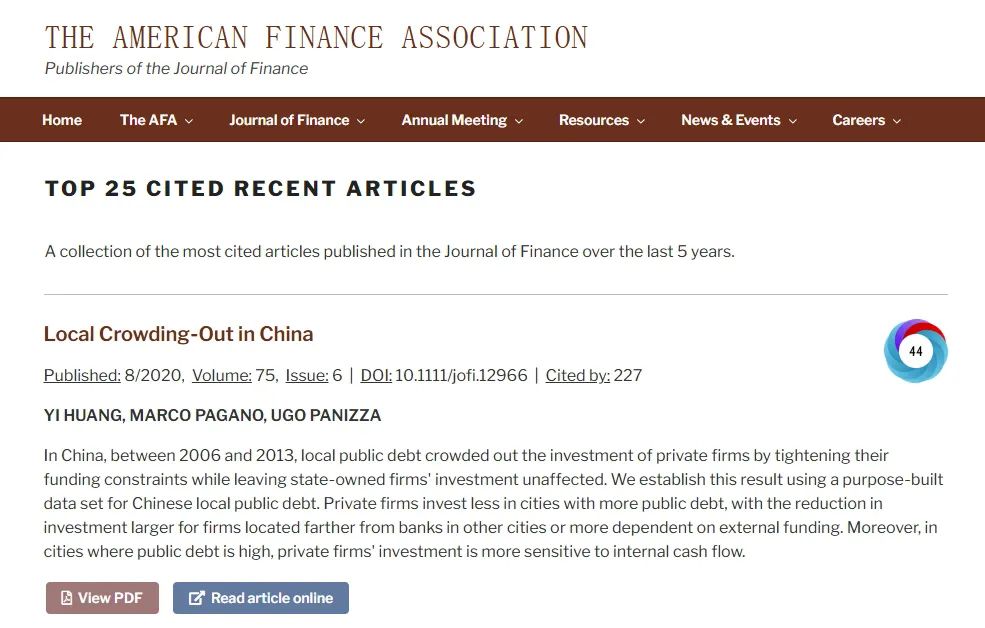
-
 86-21-63895588
86-21-63895588
-
 No.1, Lane 600, Nanchezhan Road, Huangpu District, Shanghai 200011
No.1, Lane 600, Nanchezhan Road, Huangpu District, Shanghai 200011
Release time:2024-05-31
Recently, the paper entitled “Local Crowding-Out in China” coauthored by Yi Huang, Professor in Finance at Fudan University, and his partners Marco Pagano and Ugo Panizza was included by The American Finance Association (AFA) in the Top 25 most cited articles published in the past five years (from January 2019 to December 2023), ranking No.6. The paper was published on The Journal of Finance, an international level-A+ journal, in 2020. Previously, it also won the “Pushan Award for Excellent Papers on International Economics (2022)” in 2023.

Introduction of the professor

Yi Huang
Professor in Finance at Fudan University
Doctoral Supervisor
Member of the Center for Economics Policy Research (CEPR) and Asian Bureau of Finance and Economic Research (ABFER)
The following is a brief introduction of the main content of the paper:
During the period from 2006 to 2013, Chinese financial institutions increased their credit to local governments and opened new financing channels for local infrastructure construction, effectively supporting the stable and rapid development of China's economy after the US “subprime mortgage crisis” and the “European debt crisis”. But with the continuous expansion of local government debts, problems such as its crowding-out effect on private economic investment have gradually appeared.
The paper found that: Chinese financial institutions increased their credit to local governments and tightened their fund investment with private enterprises at the same time. Through micro data on local debts in China, it also identified that private enterprises cut down their investment in cities with relatively high debts, and the amount of investment would decrease with the distance between enterprises and neighboring city banks, as well as the increasing dependence of enterprises on external financing. The paper analyzed the institutional structure of China's financial market and the characteristics of government financing channels, and thus proposed and demonstrated the crowing-out effect of the “credit allocation” model on corporate investment (private and small enterprises in particular).
Meanwhile, the paper also exhibited the different mechanisms employed by government debts in China’s practice compared to international experience to increase the financing costs of the entity economy: from interest rate adjustments to credit allocation and optimization. Combining the synergistic effects of fiscal and monetary policies, the paper distinguished the differences in the effects of indirect financing (the banking system) and direct financing (the bond market) adopted by local governments on corporate investment. Just as validated by the Eurozone debt crisis and recent global banking turbulence, it gave a prospective discussion on the potential systemic risks of public debts in bank asset portfolios. The relevant conclusions drawn in the paper on the credit market, government financing channels and pricing mechanisms would provide an essential theoretical basis for the formulation of macro-prudential policies for the sake of preventing systematic financial risks and debt crises in China.